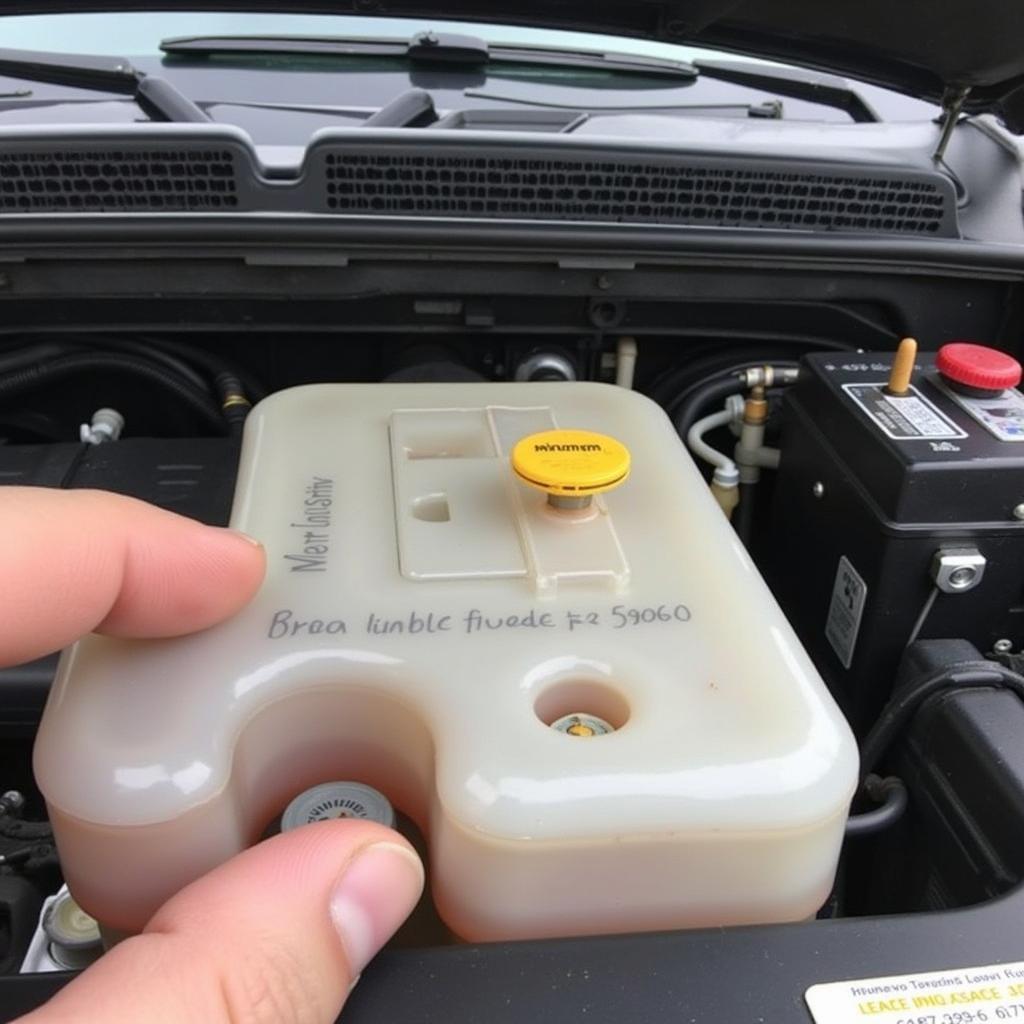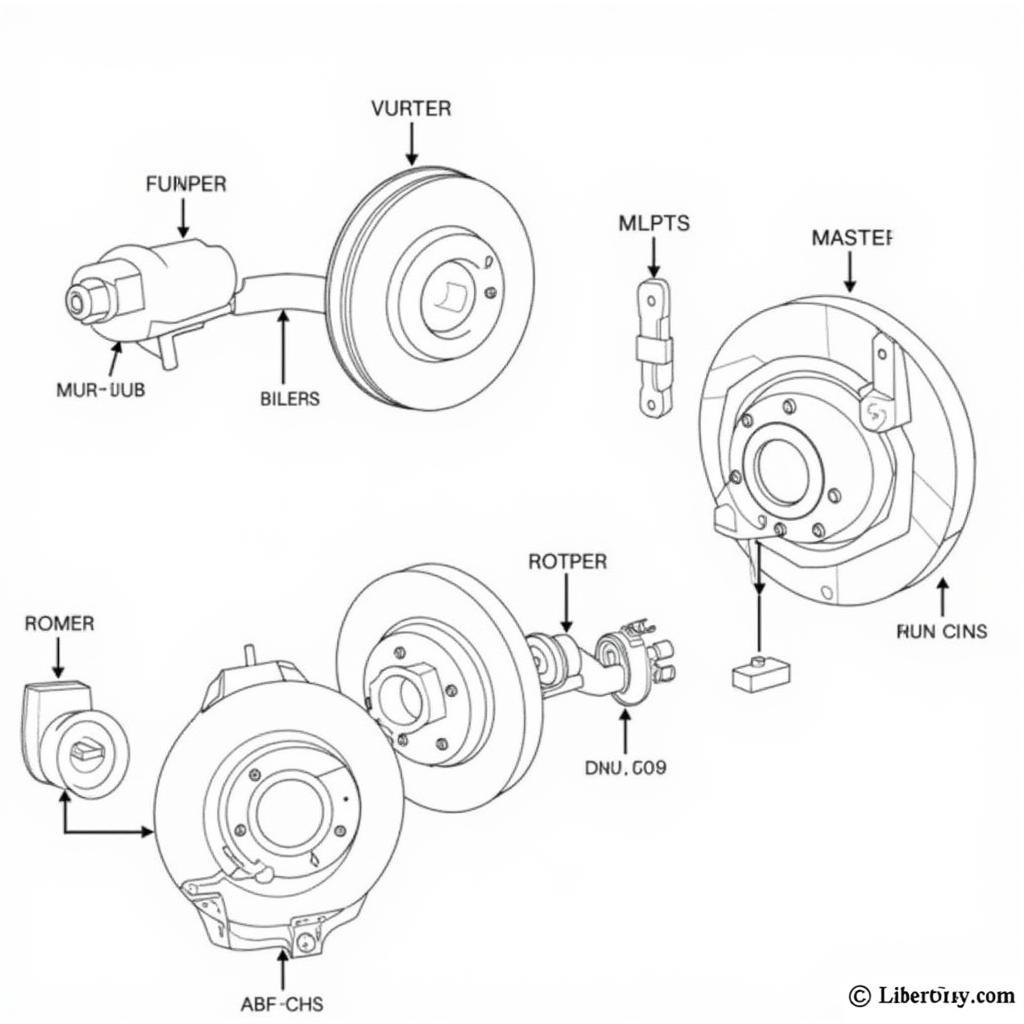The dreaded brake warning light on your 2009 Jeep Liberty can be a real headache. Understanding why it’s illuminated and how to address the issue is crucial for your safety and the longevity of your vehicle. This article provides a comprehensive guide to troubleshooting and resolving the brake warning light problem in your 2009 Jeep Liberty.
Understanding the Brake Warning Light
The brake warning light can indicate several issues, from a simple low brake fluid level to more complex problems with the braking system. Ignoring this light can lead to serious safety hazards. It’s important to diagnose the problem promptly to prevent further damage and ensure safe driving.
Common Causes of the 2009 Jeep Liberty Brake Warning Light
Several factors can trigger the brake warning light in your 2009 Jeep Liberty. Here’s a breakdown of the most common culprits:
- Low Brake Fluid: This is the most frequent cause. A leak in the brake lines or worn brake pads can deplete the brake fluid level.
- Worn Brake Pads: Thin brake pads trigger a sensor that activates the warning light.
- Faulty Brake Sensor: Sometimes, the sensor itself can malfunction, illuminating the light even if the brake fluid and pads are fine.
- ABS Issues: A problem with the Anti-lock Braking System (ABS) can also trigger the warning light. This usually requires professional diagnosis.
- Parking Brake Engaged: While less common, a partially engaged parking brake can also cause the light to stay on.
Troubleshooting the Brake Warning Light
Here’s a step-by-step guide to help you troubleshoot the brake warning light in your 2009 Jeep Liberty:
- Check the Parking Brake: Ensure the parking brake is fully released.
- Inspect Brake Fluid Level: Open the hood and locate the brake fluid reservoir. Check the fluid level against the minimum and maximum markers.
- Check for Leaks: Examine the brake lines and surrounding components for any signs of fluid leaks.
- Inspect Brake Pads: Visually inspect the brake pads through the wheel spokes. If they appear thin, they likely need replacement.
 2009 Jeep Liberty Brake Fluid Reservoir Check
2009 Jeep Liberty Brake Fluid Reservoir Check
- Test the Brake Pedal: Pay attention to the feel of the brake pedal. Does it feel spongy or go too low? This can indicate air in the brake lines or other issues.
When to Seek Professional Help
While some issues can be resolved with basic troubleshooting, others require professional expertise. If you’re unsure about any aspect of the diagnosis or repair, it’s best to consult a qualified mechanic.
“Addressing brake issues promptly is crucial,” says John Miller, a seasoned automotive technician with over 20 years of experience. “Ignoring the brake warning light can lead to costly repairs and compromise your safety on the road.”
Remote Diagnostics and Programming
Advancements in automotive technology now allow for remote diagnostics and programming. This cutting-edge service can often identify the root cause of the brake warning light without a physical inspection. Remote programming can sometimes resolve software-related issues within the braking system, offering a convenient and efficient solution.
Preventing Future Brake Problems
Regular maintenance is key to preventing future brake warning light issues. This includes:
- Routine brake inspections
- Timely brake pad and rotor replacements
- Regular brake fluid flushes
“Preventive maintenance is always the best approach,” adds Miller. “Regular checks can save you time, money, and potential headaches down the road.”
 2009 Jeep Liberty Brake System Diagram
2009 Jeep Liberty Brake System Diagram
Conclusion
The 2009 Jeep Liberty brake warning light shouldn’t be ignored. By understanding the common causes and following the troubleshooting steps outlined in this article, you can address the issue promptly and ensure your safety on the road. Remember, when in doubt, consult a qualified mechanic or explore remote diagnostic options. Don’t hesitate to prioritize your safety and the well-being of your vehicle.
FAQ
-
What should I do if my brake warning light comes on while driving? Pull over safely and immediately assess the situation. Check your parking brake, brake fluid level, and look for any visible leaks. If you’re unsure, call a tow truck.
-
How often should I check my brake fluid? It’s a good idea to check your brake fluid level at least once a month.
-
Can I drive with the brake warning light on? It’s highly discouraged to drive with the brake warning light on. It indicates a potential problem with your braking system that could compromise your safety.
-
How much does it cost to replace brake pads? The cost varies depending on the type of brake pads and labor rates.
-
What is remote diagnostics? Remote diagnostics allows a technician to analyze your vehicle’s systems remotely, often identifying the cause of warning lights without a physical inspection.
-
How often should I have my brakes inspected? A professional brake inspection is recommended every 12,000 miles or once a year.
-
Is it necessary to replace the rotors when replacing brake pads? It’s often recommended to have your rotors resurfaced or replaced when changing brake pads to ensure optimal braking performance.
